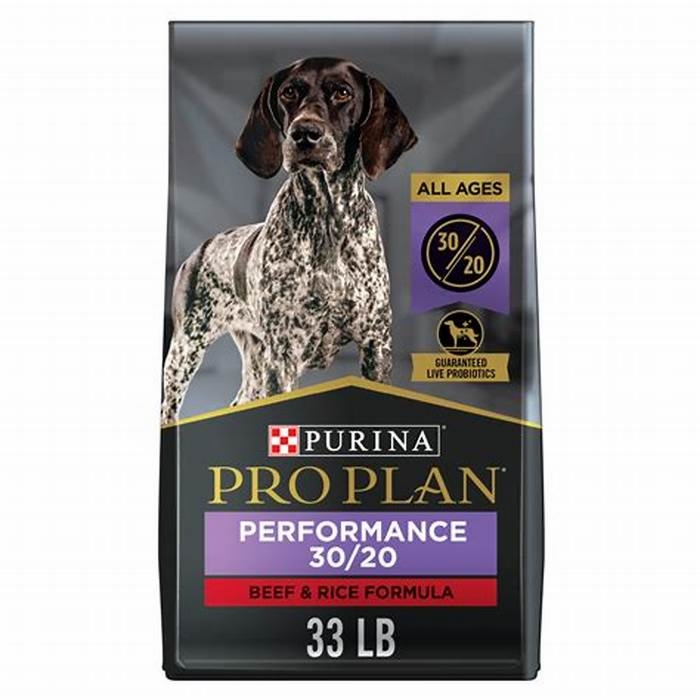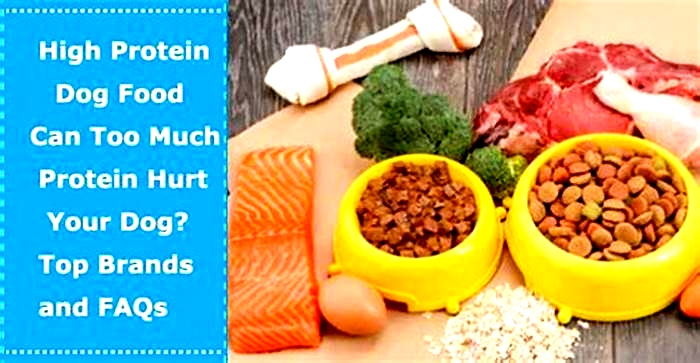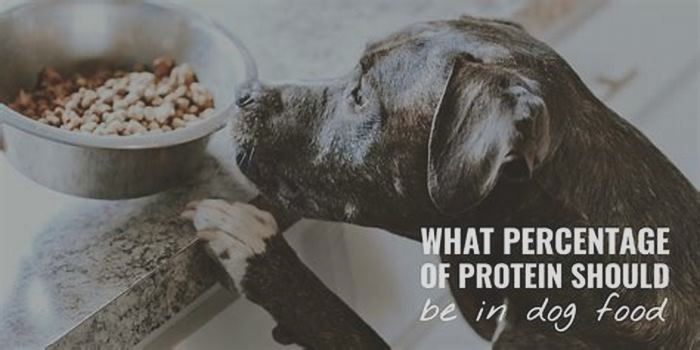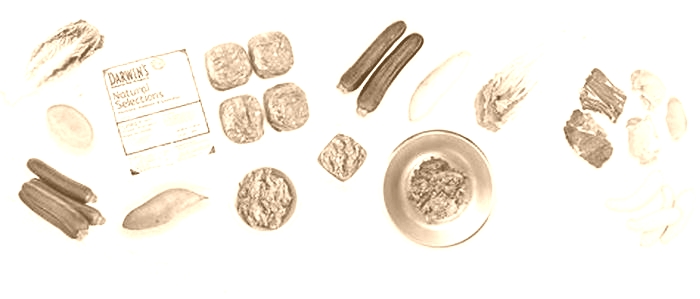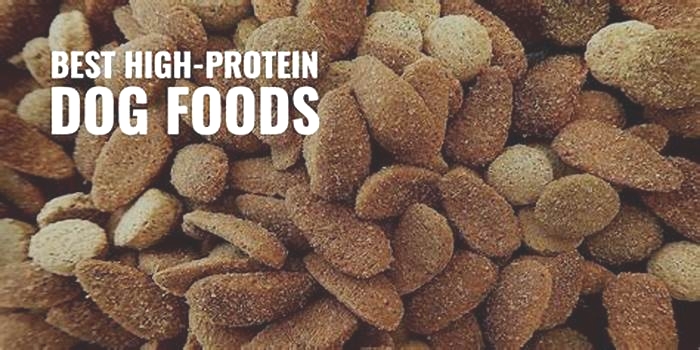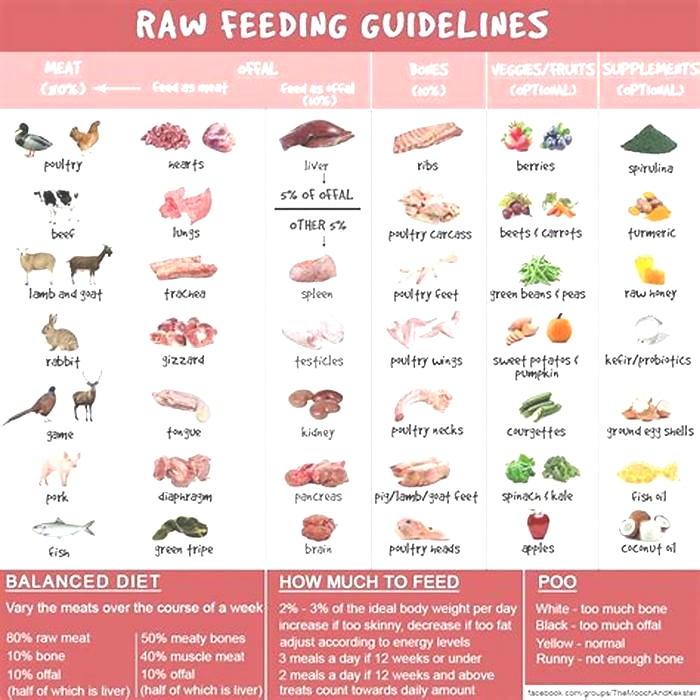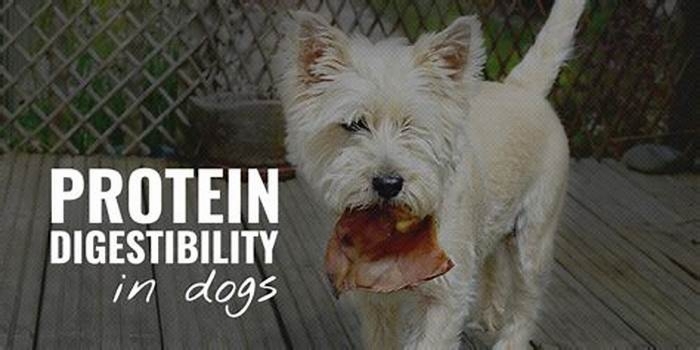Is 40 protein too high for dogs
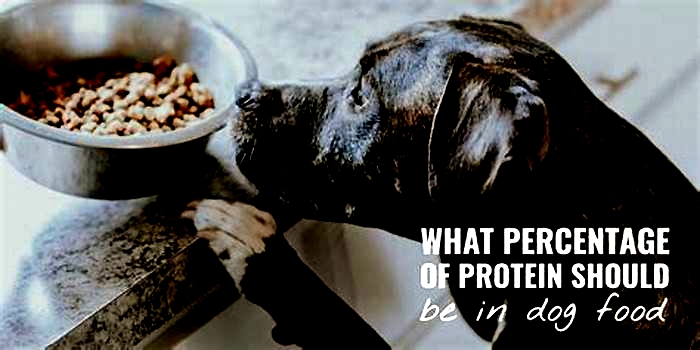
High Protein Dog Food: Reading the Label
How much protein dogs need is highly debated. Some say that protein should make up the bulk of your dogs diet, while others warn this could be dangerous. This decision should be made by you and your veterinarian, taking into consideration your dog's health and taste preferences. No pet food company should be making your mind up for you. Only you and your vet know whats best for your pup, and what diet works for him or her.
The only problem our dogs' ancestors had with protein was not being able to get enough of it. Although whether our dogs need this amount of protein today is debatable, many owners are turning to higher protein diets to try to match the diet our domestic canines evolved from. Trying to find a high protein dog food can prove confusing though, especially if youre not used to reading labels. So what exactly should you be looking for? The Association of American Feed Control Officials (AAFCO) has developed general guidelines when it comes to protein content.

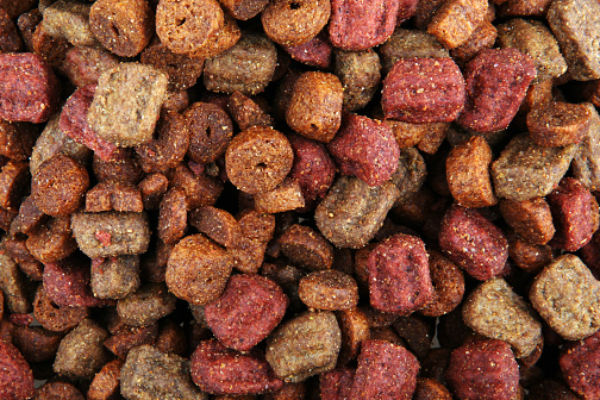
The 100 Percent All Rule
Foods and treats that are 100 percent made from a specific ingredient must contain no other ingredients except water. So, if youre looking at a bag of treats thats made of 100 percent beef, youre likely looking at a very high protein treat. Chicken strips or beef jerky treats are the most commonly seen 100 percent protein pet products almost no dog diets meet this standard.
The 95 Percent Rule
When companies wanted to start labeling their foods as something like Chicken Dog Food, but the food isn't made up of 100 percent chicken, AAFCO came out with the 95 percent rule. This requires that the protein source make up most of the food. For example, if the food says Chicken Dog Food, then 95 percent of the ingredients must be chicken. But, if it says Chicken and Rice Dog Food, then 95 percent of the ingredients must be made of chicken and rice combined. AAFCO requires that the ingredient listed first, which in this case is chicken, must be included in higher quantity than the other ingredients. AAFCO gives this example on its website: . . . a product containing 40 pounds of chicken, 30 pounds of rice, 25 pounds of water for processing, and 5 pounds of other ingredients per 100-pound batch would meet the requirements of the regulation.
The 25 Percent Rule

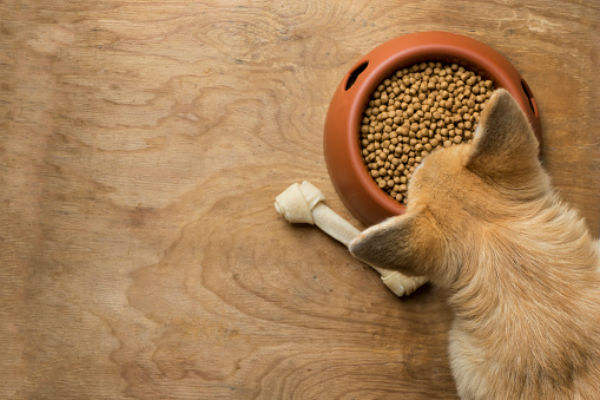
The 25 percent rule is the rule most commercial pet foods use, because it results in foods that are less expensive to manufacture. These foods are usually given names that include dinner and entre, such as Fidos Beef Dinner. Per AAFCO, The best way to understand the 25 percent rule is to compare it to a restaurant order, where a person is getting a dinner entre, and the meal includes other major parts, such as vegetables, potatoes, salad not simply the sirloin or the salmon.
The With and Flavor Rules
Foods with labels that include the word with are required to be made up of only 3 percent of the named ingredient. For example, Fluffys Delicious Dinner with Chicken needs to contain only 3 percent chicken in the ingredients. A food labeled Fluffys Delicious Dinner with Chicken and Rice needs to consist of 3 percent chicken and 3 percent rice.
Foods that say they contain a specific flavor do not need to contain much of the flavor ingredient at all. AAFCO requires that a listed ingredient provides the flavor and the flavor descriptor is printed in the same font and as conspicuously as the name of the designated flavor. This essentially means that a Beef Flavored Dog Food needs to contain something like beef fat and one other ingredient that provides beef flavor.
Once again, choosing the right dog food can prove to be quite draining. With hundreds-to-thousands of options available, it can be overwhelming just deciding what several foods you want to try with your dog. Although this article discusses the rules that apply to protein in dog food, the same rules actually apply to ingredients across the board for AAFCO. So if youre looking for high protein, high fat, or high carbohydrates, you can use these guidelines to narrow down your search. And, of course, consult your veterinarian if you have any questions.
Is High-Protein Dog Food Healthy for Your Pup?
As a pet parent, you want to give your dog the best of everything including nutrition. However, choosing the right food isn't always straightforward. For example, you might have heard that high-protein dog food is best for pups. But while protein is an essential nutrient, like most things, too much of a good thing can be harmful. Too much protein in dog food or too little can cause health problems.
Here's what you should know about protein in dog food to help you make the best choice for your canine companion.

What Does Balanced Nutrition Mean?
It's easy to focus on one nutrient at a time, but it's important to look at dog food as a whole. You've probably heard advertisements stating that a particular food is "complete" or "balanced," and that's because those qualities are essential to good nutrition. But what exactly does that mean?
In addition to protein, dogs need carbohydrates, healthy fats, vitamins and minerals. According to the Cummings School of Veterinary Medicine, these vitamins and minerals include calcium, phosphorus, potassium, and vitamins A, D and E, among others. Many of these nutrients interact with each other. For instance, your dog needs fat to absorb certain vitamins, and carbohydrates help the body use protein more efficiently.
Dogs aren't carnivores but omnivores. This means their systems evolved to consume meat and plants. While meat is great for protein, as well as key vitamins and minerals, plants supply many other vitamins and minerals plus carbohydrates and fiber. Fat can come from both sources.
Bioavailability
A key feature of a nutrient is "bioavailability," which indicates how well the nutrient is absorbed and utilized by the body. This is one of the most important features of a dog food since nutrients won't do much good if they're left behind as waste. This is also why the crude protein level on your dog food label doesn't provide an accurate indication of the amount of protein your dog will absorb. Absorption is calculated by testing the food for nitrogen, which is then plugged into a formula and converted to a protein amount. It's not a reliable indication of the protein source's quality or how much your pup will actually digest.
Can Too Much Protein Harm Your Dog?
Kidney disease often goes undiagnosed in dogs who don't show any clinical signs. If your dog has underlying kidney disease, the high phosphorus levels associated with high-protein dog food can exacerbate and accelerate the disease process.
Excess protein can also lead to bone disease, which is typically seen in dogs who are only fed meat (e.g., your neighbor's super picky Pomeranian who only eats rotisserie chicken). Because meat is high in phosphorus and basically devoid of calcium, calcium levels fall and phosphorus rises over time. To correct this imbalance, the body pulls calcium from the bones.
Which Protein Source Is Best?
When most people think of protein, they think of meat. Poultry, beef, pork and fish are all excellent sources of protein that are common in dog foods. But, as any of your vegetarian friends will tell you, there are many other ways to get protein, including eggs, wheat, corn and legumes.
A complete, balanced dog food does all the work for you. Check the food bag's small print to find out whether it's been formulated and/or tested to be "complete and balanced," which means it meets the nutritional requirements for your dog's life stage as established by the Association of American Feed Control Officials. Whatever the protein source, this tells you it's the right amount to meet your pet's needs.
How Much Protein Does Your Dog Need?
Now you know that too much protein in dog food isn't recommended. But is a high-protein dog food ever warranted? If your dog is an athlete, meaning they complete field trials on a regular basis or run in agility, a high-protein dog food might be beneficial. If your dog is older, however, you'll want to back off on the protein since old kidneys aren't as forgiving as young ones. Likewise, if your dog has been diagnosed with kidney failure, your veterinarian will likely recommend controlled protein foods, among other nutrients.
Age, breed size, activity level and lifestyle are all important factors to consider when choosing your pup's food. Your dog is unique, so ask your vet which dog food they suggest. Rather than focusing on just one nutrient, aim to feed your dog a high-quality food that's complete and balanced with all the nutrients they need to thrive.
Contributor Bio

Dr. Karen Louis
Dr. Karen Louis owns a small animal clinic near St. Louis, MO. When not helping pets in her low stress clinic, she is walking her rescue dogs or taking nature photos.
Do Cats Need High-Protein Cat Food?
As more research is done in the field of veterinary nutrition, we continue to learn more about how to keep pets happy and healthy with one of the most important and enjoyable aspects of their daily care: food.
Research has shown that one of the most critical dietary components for our feline friends is protein. Heres what you need to know about protein for cats and high-protein diets.
Why Cats Need Protein
There are six classes of nutrients that may be provided by the diet:
Water
Protein
Fats
Carbohydrates
Vitamins
Minerals
Of these nutrients, protein, fat, and carbohydrates can be used as energy sources.
Different species digest and utilize nutrients differently, and therefore have different nutrient requirements. In general, herbivores, or animals that only ingest plants, generally rely more upon carbohydrates for energy than do omnivores (animals that ingest plants and meat), or carnivores (animals that only ingest meat).
Cats Are Obligate Carnivores
Unlike dogs, which are omnivores, cats are obligate carnivores. This means that their bodies have adapted to a diet consisting strictly of meat, which provides animal protein.
Domestic cats are very similar to their wild predecessors and have evolved very little from them. In the wild, a cats diet consists of mainly small rodents, such as mice, as well as rabbits, birds, insects, frogs, and reptiles.
A cats metabolism is especially suited to a strictly meat-based diet. While herbivores and omnivores can synthesize certain amino acids, which are the building blocks of proteins, cats have more limited ability to do so.
Cats Need Amino Acids From Animal Protein
As a result, cats evolved to ingest specific amino acids that already exist in meat sources because their bodies do not produce enough of them for survival. Cats depend on their diet for many amino acids.
Most species share a need for 9 essential amino acids (amino acids that must be obtained from the diet), but cats require two additional essential amino acids: taurine and arginine. Both taurine and arginine are obtained from eating animal tissues.
Cats are also unable to sufficiently produce certain vitamins that are critical to their health, including niacin, vitamin A, and vitamin D, so they must get them from animal tissues.
Taurine
Taurine is an amino acid that is particularly important to eye and heart health. It is also necessary for normal reproduction and kitten growth.
Although cats can synthesize small amounts of taurine, they are not able to produce as much as their bodies need.
In the absence of taurine, cats may suffer from blindness due to central retinal degeneration, heart failure from dilated cardiomyopathy, reproductive failure, and/or developmental abnormalities of the central nervous system.
Arginine
Arginine deficiency leads to high levels of ammonia in the blood, resulting in neurologic symptoms that may quickly lead to seizures and death.
Protein Is a Cats Most Important Source of Energy
Cats also use protein for energy. In fact, it is their most important source of energy.
Unlike other species, a cats liver enzymes are constantly breaking down proteins for energy and maintenance of blood glucose levels. When cats do not receive enough dietary proteineven when other sources of energy, such as carbohydrates, are presenttheir bodies start breaking down their own muscle tissue to meet their protein and amino acid requirements.
Common Sources of Protein in Cat Food
There are two main sources of protein used in cat food: animal protein and plant protein. Although vegetarian diets and alternative protein sources may appeal to pet parents, cats are not able to meet their nutritional needs with plant sources alone. Certain nutrients are present only in animal tissues and not in plant products. For example:
Taurine, an essential amino acid for cats, is present in animal tissues but not in plant products.
Methionine and cystine are amino acids that are required in high amounts in cats, especially during growth. Plant sources do not generally provide high enough levels of methionine or cystine for cats. Deficiency of these amino acids can result in poor growth and crusting dermatitis. Kittens require that 19% of their diet consist of animal protein to meet their methionine requirements.
Proteins from animal sources generally have higher biologic availability, and are therefore more readily used by the body than proteins from plant sources.
Animal Protein
Common sources of animal proteins in cat food include beef, chicken, turkey, lamb, and fish. In addition to seeing these animal proteins on a label, you may also see different meat meals or meat by-products. And although many pet parents think these are bad ingredients, they actually provide concentrated protein sources.
Meat Meal
Meal is a term that is commonly seen on pet food labels in reference to the source of animal protein. According to the nonprofit Association of American Feed Control Officials, or AAFCO, the term meal denotes animal protein that has been ground and had the water removed.
For example, poultry meal is a dry product produced from whole poultry carcasses and does not contain feathers, head, feet, and entrails. Meal is therefore considered an adequate and concentrated protein source.
Meat By-Products
Meat by-products include organ meat. Although many pet parents try to avoid by-products when purchasing pet food, by-products can actually provide an adequate and concentrated source of nutrients.
Plant Protein
Common sources of plant protein in cat food include corn gluten meal, soybean meal, wheat gluten, and rice protein concentrate.
Plant Meal
While some plant sources, such as soybean meal, sunflower meal, and Brewers yeast, contain comparable levels of protein to animal-based ingredients, cats are not able to digest and utilize these energy and nitrogen sources as readily as animal proteins.
These sources also do not contain sufficient taurine or methionine. Although synthetic sources of taurine and methionine may be added to some diets, their digestibility is decreased compared to the nutrients that naturally occur in animal tissues.
So, while cats can use plant products and synthetic nutrients as a portion of their diet, they still need to consume animal tissue for adequate life-long nutrition.
Does My Cat Need High-Protein Cat Food?
Adult cats require significantly more protein as a percentage of their diet than dogs or humans. While exact protein recommendations have some degree of variation, adult cats generally need a minimum of 26% protein in their diet, while adult canines require 12%, and humans require 8%.
To put this into the perspective of a cats natural diet, a mousewhen measured on a dry matter basis contains approximately:
55% protein
45% fat
1-2% carbohydrate
It provides approximately 30 kcal of metabolizable energy (ME), which is about 12-13% of a cats daily energy requirement.
While AAFCO guidelines recommend a minimum of 30% protein for Growth and Reproduction life stages and 26% protein for adult maintenance, an even higher percentage of dietary protein is likely warranted for optimal health.
Recent studies have shown that adult cats that did not consume a diet consisting of at least 40% protein lost lean body mass over time. Some feline diets are 30-38% protein, and diets at this level will result in loss of muscle mass over time. Poor-quality protein, or protein that is less digestible, will result in faster loss of muscle mass than high-quality protein.
Senior Cats Need Increased Protein Levels
As cats age, their protein requirements increase due to reduction in digestive efficiency.
Many cats of 12 or more years of age should be fed a diet containing nearly 50% protein. Many diets formulated for older cats have decreased protein levels due to concerns over kidney disease, which is common in the aging cat population.
While protein restriction may be beneficial for certain cats with kidney disease, a more conservative approach to protein restriction is now recommended and is a topic that should be discussed with your veterinarian.
How Do I Determine How Much Protein Is in my Cats Food?
It can be difficult to determine how much protein is in pet food based on the label alone. This is in large part due to variations in the moisture content of food.
The AAFCO Dog and Cat Food Nutrient Profiles base nutrient recommendations on a dry matter basis, which means that nutrient percentages are calculated without considering water (moisture) content.
Pet food labels, however, print nutrient content on an as-fed basis, which includes water content. This can lead to confusion on the part of consumers, since canned pet food usually contains around 75% moisture, and dry pet food contains about 10% moisture.
So, how do you compare the protein content of cat food when all you have to go off of is the label? The answer is to convert the protein level from an as-fed to a dry matter basis.
Find the Moisture (max) percentage and Crude Protein (min) listed on the pet food label (found in the Guaranteed Analysis section) to perform these calculations:
Subtract the Moisture (max) percentage from 100. This will give you the percent dry matter of the diet.
Divide the Crude Protein (min) by the percent dry matter of the product.
Multiply the result by 100. This will give you the percent of protein on a dry matter basis.
Canned food example:
Canned Food A has the following listed on its label:
12% crude protein minimum
78% moisture maximum
Calculation:
100 78 (moisture) = 22 (dry matter of the diet)
12 (crude protein) / 22 = 0.545
0.545 x 100 = 54.5
The percent protein of Canned Food A on a dry matter basis is 54.5%
Dry food example:
Dry Food A has the following listed on its label:
37% minimum crude protein
12% moisture guarantee
Calculation:
100 12 (moisture guarantee) = 88 (dry matter of the diet)
37 (minimum crude protein) / 88 = 0.420
0.420 x 100 = 42.0
The percent protein of Dry Food A on a dry matter basis is 42.0%
In this example, it is important to note that by reading the label without considering moisture content, it appears that Dry Food A contains significantly more protein than Canned Food A. However, Dry Food A actually has 12.5% less protein than Canned Food A.
AAFCO Crude Protein Requirements
AAFCO sets standards for pet foods in the United States. While compliance with AAFCO standards is not required for commercial pet foods, most veterinary nutritionists recommend feeding only diets that are AAFCO compliant.
These products will have a nutritional adequacy statement (or AAFCO statement) that states that the diet conforms to one of the AAFCO Dog or Cat Food Nutrient Profiles or Feeding Protocols.
An example of the importance of AAFCO compliance is further illustrated by a discussion of protein analysis. The Guaranteed Analysis section of the pet food label contains the percentages of each of the following:
Crude Protein
Crude Fat
Crude Fiber
Water
Crude Protein is determined based on chemical analysis of all nitrogen-containing sources in the food. Therefore, some non-protein-containing sources, such as urea, can be included in the crude protein content.
AAFCO states that not more than 9% of the crude protein in a diet should be pepsin indigestible, meaning that at least 91% of the protein content of AAFCO-approved foods should be digestible protein. Therefore, diets that do not follow AAFCO recommendations may appear to contain adequate protein based on the percentage of Crude Protein; however, this protein may be largely indigestible.
Pet foods that are AAFCO-compliant adhere to more in-depth nutrient profiles that also include recommended amounts of amino acids such as taurine and arginine.
Can Cats Be Allergic to Protein?
Food allergies are fairly common in the feline population. Food allergies may result in symptoms such as:
Allergies to foods are generally triggered by specific proteins within the foods. In order to diagnose a food allergy, a diet trial must be completed. This involves feeding a strictly limited diet, or elimination diet, for a period of eight to 12 weeks.
If the diet trial results in a resolution of symptoms, the cat is generally diagnosed with a food allergy.
Elimination Diets
Elimination diets may take the form of limited ingredient diets or hydrolyzed protein diets. Hydrolyzed protein diets are generally only available with a prescription from a veterinarian. The use of these diets is based on the knowledge that in order to develop an allergy to something, the body must have had prior exposure to it.
Limited ingredient diets work by using proteins that the body has not encountered before and will therefore not have already developed an allergy to. These diets may use protein sources such as duck or venison, which are not included in most commercial diets.
Hydrolyzed protein diets work by modifying the shape of the proteins, so the body does not recognize them as an allergic trigger. They may still contain proteins from common sources such as chicken or fish, but the protein shapes and sizes are modified so they do not trigger allergy receptors.
Cats that respond favorably to a diet trial with a limited ingredient or hydrolyzed diet often continue successfully on the elimination diet. Alternatively, they may undergo a diet challenge, were they are introduced to other protein sources with close monitoring as to which sources do and do not trigger the allergies.
Pet parents must consider many different factors when selecting a diet for their feline companions. Often, multiple sources of information may seem overwhelming and can make decision-making even more difficult. However, one of the most important things for cat parents to remember is that protein is a critical nutrient to consider when planning the diet of these obligate carnivores.
Featured image: iStock.com/gornostaj
References
AAFCO Methods for Substantiating Nutritional Adequacy of Dog and Cat Foods: AAFCO Dog and CatFood Nutrient Profiles. www.aafco.org, 2014.
Burns, Kara M., Feline Nutrition Cats Are Not Small Dogs! Southwest Veterinary Symposium, September 21-24, 2017, San Antonio, TX.
Davenport, Gary M., Feeding Cats as Carnivores. Iams Company Symposium Proceedings, 2002.
Kerby, Victoria L., Feeding Our Feline Overlords: Nutrition for the Internets Favorite Animal. Western Veterinary Conference, February 16-19, 2020, Las Vegas, NV.
Scherk, Margie, Feline Nutrition: Facts, Fun and Physiology, Cats Are Different Than Dogs! American Board of Veterinary Practitioners Symposium, April 15-18, 2010, Denver, CO.
Thomas, Randall C., Food Allergy in Dogs and Cats. Western Veterinary Conference, 2005.
Verbrugghe A. and S. Dodd, Plant-Based Diets for Dogs and Cats. World Small Animal Veterinary Association Congress Proceedings, July 16-19, 2019, Toronto, Canada.
Zoran, Debra L., Cats and Protein: The Conversation Continues. American College of Veterinary Internal Medicine Forum, June 14-16, Seattle, WA.

